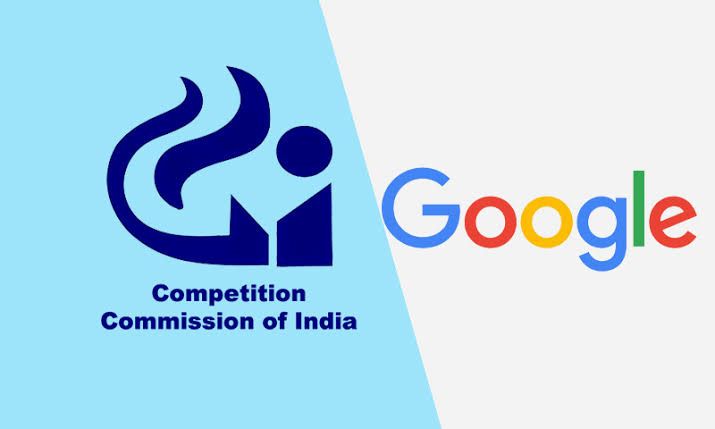Author: Mohan Kumar K P, a student at Sathyabama Institute of Science and Technology
Headline of the Article
Google LLC & Google India Pvt. Ltd. V. Competition Commission of India & Ors., the CCI, had found that Google was engaging in abusive practices as the principal player in the Indian smartphone Android ecosystem by unfairly exploiting OEMs through the mandatory pre-installation of GMS apps; moreover, the merger of Chrome and YouTube to Play Store; and providing Google Pay with the in-app billing and search a preferential treatment. CCI has consequently issued a direction to Google to stop anti-competitive conduct under Section 4. In addition, the CCI has also issued a monetary penalty of ₹1,337.76 crores. Google has appealed the decision at NCLAT (which has concurred with the penalty) and the Supreme Court. The latter has refused the motion for an interim relief and has also ordered Google to remit 10% of ₹936 crores.
To the Point
Indeed, the main question to be decided was whether Google’s actions were in breach of several provisions of Section 4 of the Competition Act, provisions that were cited as the basis for the complaint. Google was accused of unfair conditions (4(2)(a)(i), (d)), limiting technical progress (4(2)(b)(ii)), denying market access (4(2)(c)), and tying (4(2)(e)) violations of Section 4. The CCI observed that. Google, through its MADAs and AFA/ACC agreements, as well as the adoption of these, misled OEMs by promising GMS suite, thus restricting the freedom of Android forks that were not informed; steering users toward search, payment, browser and video apps that were of its own; and furthermore, they also went on to restrict the competing app stores and UPI apps on Play Store. The fine was imposed on google in accordance to Section 27(b). This amount was confirmed by NCLAT on appeal, some behavioural restraints being dropped but the core findings remained.
Use of legal jargon
This proceeding is contoured upon the implementation of Section 4 of the Competition Act, 2002, which deals with “abuse of dominant position.” The legal concepts that were emphasized include “unfair conditions” (Section 4(2)(a)(i)), “technical restriction” (4(2)(b)(ii)), “denial of market access” (4(2)(c)), “bundling” or “tying” (4(2)(d) and 4(2)(e)) and “relevant market.” In addition to those, the terms MADAs (Mobile Application Distribution Agreements), AFAs (Anti-Fragmentation Agreements) and ACC (Android Compatibility Commitments) which were the core of Google’s contracts with the OEMs are also mentioned. The Tribunal implemented an effects-based strategy by taking ideas from EU antitrust law, such as the Hoffmann-La Roche principle and General Court’s Android ruling, to prove the existence of economic harm.
The Proof
The CCI contended the case by submitting licensing contracts, internal Google policies, OEM testimonies, and developer complaints as evidence. Google’s agreements compelled device manufacturers to go beyond customising and to pre-install a complete suite of apps—namely Chrome, YouTube, and Google Search—without the option of choosing. OEMs testified they did not have a practical choice and therefore had to obey, and going by that logic, alternatives such as Amazon’s Fire OS would have been struggling to penetrate the market. The CCI also brought up Google’s limitations on app store distribution and UPI providers, like Paytm and PhonePe, hence, restricting the market competition.
Abstract
The case demonstrates the Google’s control of digital market in India, where the CCI investigation found that Google has taken its position in the Android ecosystem by abusive conduct through restrictive agreements and employing exclusionary tactics. The Commission has identified the breach of the first line being the imposition of the bundling of the applications. Besides, the search giant also allegedly engaged in the repression of alternative browsers and payment services along with the practice of disincentivizing Android forks. Google was not only fined ₹1,337.76 crore but also ordered to change its way of doing business. However, NCLAT, while upholding the fine, decided to alter certain parts of the reliefs in the appeal.
Case Laws
1. CCI V. Steel Authority of India Ltd.
The case was cited in relation to procedural fairness and temporary relief. The Supreme Court had said that they can only set aside CCI decisions if they find a very convincing reason. The Tribunal followed the same reasoning when it refused to give Google interim relief while it was filing an appeal.
2. European Commission V. Google
The case addressed almost the same issues in the European Union as when Google was fined for the illegal tying of Android with the apps of Chrome and Search. The Tribunal reiterated it to confirm that tying activities are possible to lead to the abuse of dominance, especially if such behaviour makes the access to the market difficult and the innovation impossible.
3. Excel Crop Care Limited V. CCI & Anr.
The Supreme Court decision as an example where it was established that fines under Section 27 of the Competition Act have to be proportionate to the turnover it is integral that it shall not violate the principle of proportionality. Google accused CCI of not following this rule while coming up with the ₹1,337.76 crore penalty figure.
Conclusion
The case cements a regulatory benchmark against Big Tech’s dominance in India’s digital ecosystem. The CCI’s ruling and NCLAT’s affirmation confirm that mandatory pre-installation, contractual coercion, and exclusion of alternatives constitute abusive behaviour under Section 4. Google’s defense that such practices were user-friendly or optional did not stand, particularly when OEMs lacked practical alternatives. While some remedial directives were softened, the penalty was upheld. This case marks India’s transition to an economic impact–driven enforcement style. Future cases will likely adopt this standard, especially with impending digital competition laws. Ultimately, this verdict emphasizes user choice, interoperability, and curbs on anti-competitive bundling by platform giants.
FAQs
Q1: Why was Google fined ₹1,337.76 crore by the CCI?
The CCI penalized Google for monopolistic practices by violating fair competition regulations and abusing the power of dominance for the distribution of devices, along with Google Apps such as Search, Chrome, and YouTube. Besides violating competition law, this behaviour limited consumer choice which consequently resulted in the decrease in the market share of Google and other players such as other browsers, payment apps, and app stores. The amount of ₹1,337.76 crore represents the fine arrived at based on Google’s Indian turnover as per Section 27 of the Competition Act.
Q2: What does the term “effects-based approach” mean in this case?
In their investigation, the CCI and NCLAT did not rely only on the contracts in which the exercises of power were formally acknowledged but also on the reality of the market to see whether Google’s actions have a positive or negative influence. This strategy which is adapted from the European Union law considers the extent of the damage if any, sustained by the users and the competitors.
Q3: Did the courts provide Google any relief from CCI’s order?
No. Google went to the NCLAT initially, asking for an interim relief to avoid penalty payments and compliance; however, the NCLAT denied the request and instead ordered Google to deposit 10% of the penalty.



